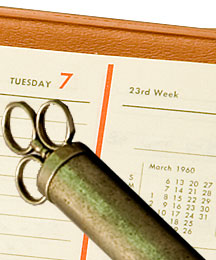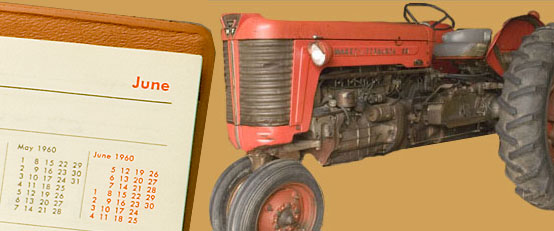 |
|
 |
Military | Presidency | Mamie | Farm | Pop Culture | Home & Farm | All Image Gallery |
 |
|
FARM: Soil Conservation Cattle Breeding Eisenhower and his partners wished to improve the Angus breed overall and worked toward producing high quality pure bred cattle. Their operation received two big boosts in 1956. First, Ankonian 3551, a huge but gentle Angus bull, came to reside on the farm. As principle herd bull, he sired a long line of prizewinning offspring. Second, Bob Hartley joined the farm as herdsman. Hartley was a recent graduate of Pennsylvania State University with a fine eye for cattle and a bright outlook on the new operation. Breeding pure-bred cattle was much more than just turning a good bull loose in a field with cows. Each animal was studied for its best characteristics and bloodlines were traced back at least 3 generations before determinations were made on particular matches. When the cow was in heat, she would be brought to the breeding shed on Farm 2 and confined in a breeding chute for insemination. Herdsman Bob Hartley used the calendar book pictured to keep track of the breeding records during 1960. At first, breeding was conducted naturally. Soon artificial insemination was employed. Semen harvested from suitable bulls was stored and transported in small ampules, such as those pictured, before being injected into the waiting cow. The new technology opened up a wider range of prospective matches. Promising calves were separated from their mothers at four months old and received special attention to prepare them for the show circuit. Kept in sand-floored pens in the show barn, the show cattle were fed a premium feed of hand-mixed grains, cooked barley, sugar beet pulp, molasses, and supplements to encourage growth. A small herd of Holstein dairy cows kept on the farm provided young calves with the opportunity to nurse on high quality milk. Each animal and their pen were kept thoroughly clean, with daily brushing and a weekly bath. In warmer weather, the farm staff sprayed the cattle with cool water and turned them out in the pasture in the evening.
|

